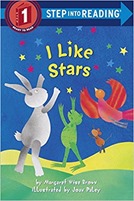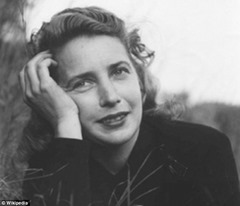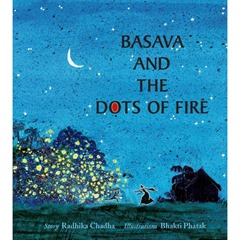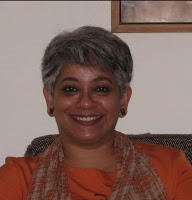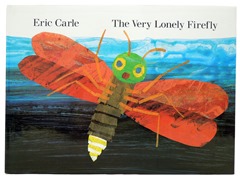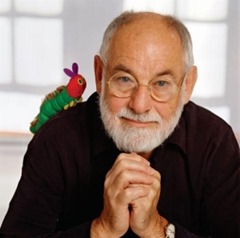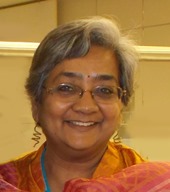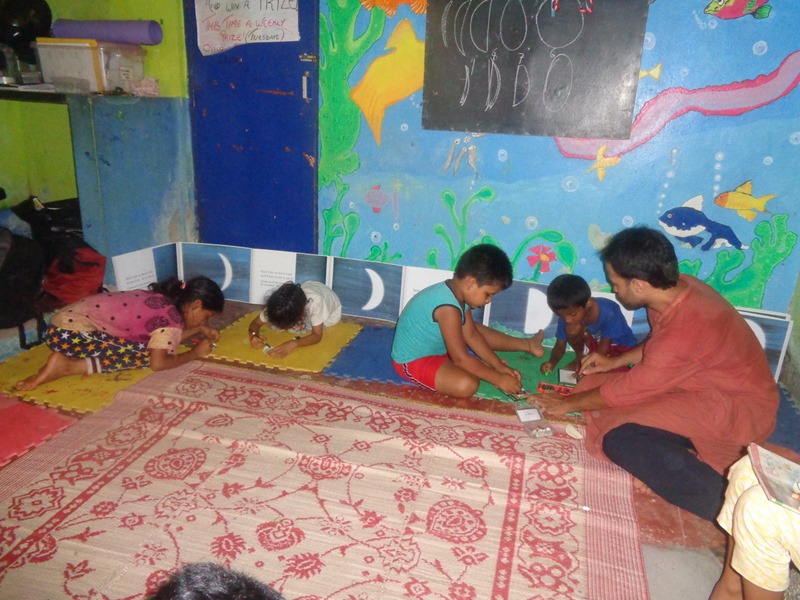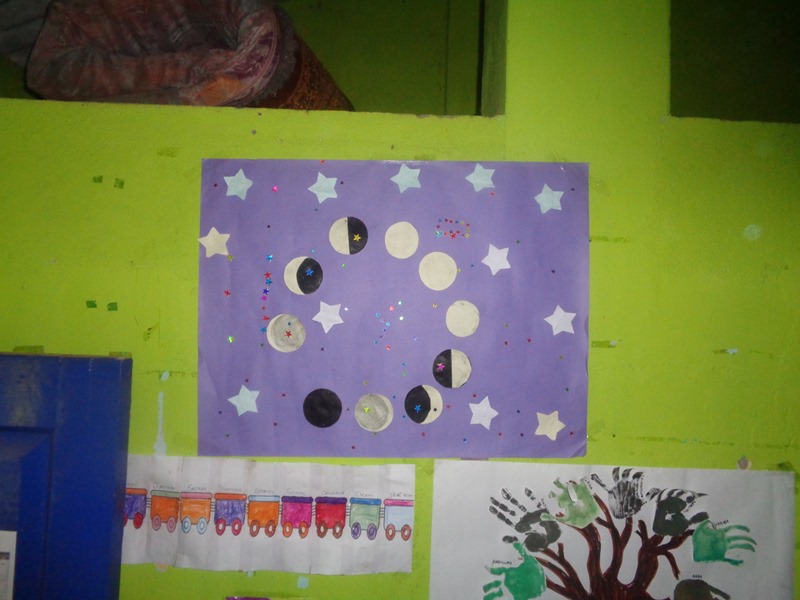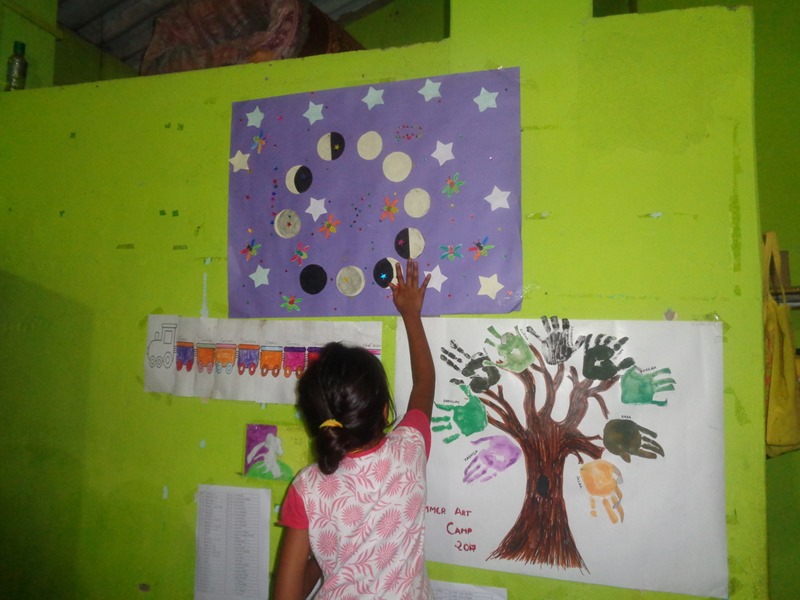What can be done on a summer’s night, which cannot be done on a summer’s day?
Lying down beneath the dome of our sky and gazing above.
No clouds are likely to float by. Even if they choose to visit on a no-moon night, they glisten a silver grey, just for you.
Somehow the hot, yet colour filled summer, inspired Gayatri (who was part of the first session, out of three) and myself, to pick up books on the cool, clear, night sky.
We worked with four texts over a couple of sessions that captured the summer night sky. We did these with two groups of children.
Some reflections and connections with these texts are here.
We began our night sky imaginings in a small community library room in Chimbel, by placing a torch in the center of the circle of children and turning off the light. A few rays of sunlight threatened to slip into the room from a gap in the roof.
We mentally shut it out. We wanted the night as we shared what source of light has intrigued us in the dark. Candles, lamps, electric bulbs and lightening streaks, lit up our imagination.
We then introduced our books, to the two groups of children.
I Like Stars is a book written by Margaret Wise Brown (May 23, 1910 – November 13, 1952), an American writer of children’s books, including the picture books Goodnight Moon and The Runaway Bunny. This book is illustrated by Joan Paley.
Margaret loved animals. Most of her books have animals as characters in the story. She liked to write books that had a rhythm to them. She tried to write in a way that the children would like to hear a story, which isn’t the same way a grown up would normally tell it.
She taught the illustrators working with her to draw, the way a child would see the image. This might be the reason why every child we share this book with, though simple in text, is drawn into the rabbit’s world almost instantaneously.
Margaret would have been glad to meet Alim, a 4 year old in our session, who was trying to pick up the names of colours from other older children.
Alim was not a regular student. He turned up for this particular session with his keen eyes and sharp mind, engaging with everything that was said in the session, to the best of his ability. The text drew him into the world of colours and the night sky.
The next book, Basava and the Dots of Fire is written by Radhika Chadha, illustrated by Bhakti Phatak and published by Tulika, Chennai brought about another dimension of the night sky – the fireflies.
Gayatri read aloud to Saniya and Sarah. Both the girls, listened intently to the whole story, wondering through the story, how a butterfly and a dragonfly could help Basava to return back home in the dark of the night.
After the story, she showed them a video on fireflies and they were mesmerised to shift from a world of magic realism to the real world, through these tiny nightlight creatures.
Gayatri who lives in a city had never seen fireflies herself, so Basava and the Dots of Fire meant a lot to each of them in the trio, facilitator included!
This text was followed a couple of weeks later by the Very Lonely Firefly, written and illustrated by Eric Carle, born on June 25, 1929 (age 87). Eric Carle is an American designer, illustrator, and writer of children’s books. He is most famous for The Very Hungry Caterpillar.
The themes of his stories are usually from his extensive knowledge and love of nature— an interest shared by most children.
Carle attempts to make his books entertaining, and also to offer his readers the opportunity to learn something about the world around them.
We began by recalling our night sky books of the previous weeks and looked at the cover page of this new book and discussed the title.
In exploring the meaning of ‘lonely’, Palak (a child at the session) said she likes to be on her own sometimes, Tanishka said she does not like to be alone, as the meaning revealed itself. The speech bubble format of the book provided scope for directing the story.
We played a ‘Look out for the firefly game’ using black chart paper, chalk and the images of various sources of light as in the book. The children enjoyed the game a lot, and it allowed us to capture some of the charm of a summer night out.
Our final text in this series was Look the Moon by Sandhya Rao, with art by Trotsky Marudu. The simple spread of this text, allows the children to experience night – sky – moon – watching without going out side at all. Each page produces a gasp of wonder at the shape and size of the moon.
Our immersion in the moon, compelled us to all look for the moon, as we left this theme behind.
With Ramzan almost on our doorstep, our looking has a different intensity and with it comes the vista that a June night sky presents for us in Goa, both within the library and without.
(Acknowledgements: Report extracts from Gayatri Borkar’s session on Basava and The Dots of Fire and Assistance from Krystle Miranda during the same session. Assistance from Stephie Madurai in two sessions on Look, the Moon! And The Very Lonely Firefly.)

